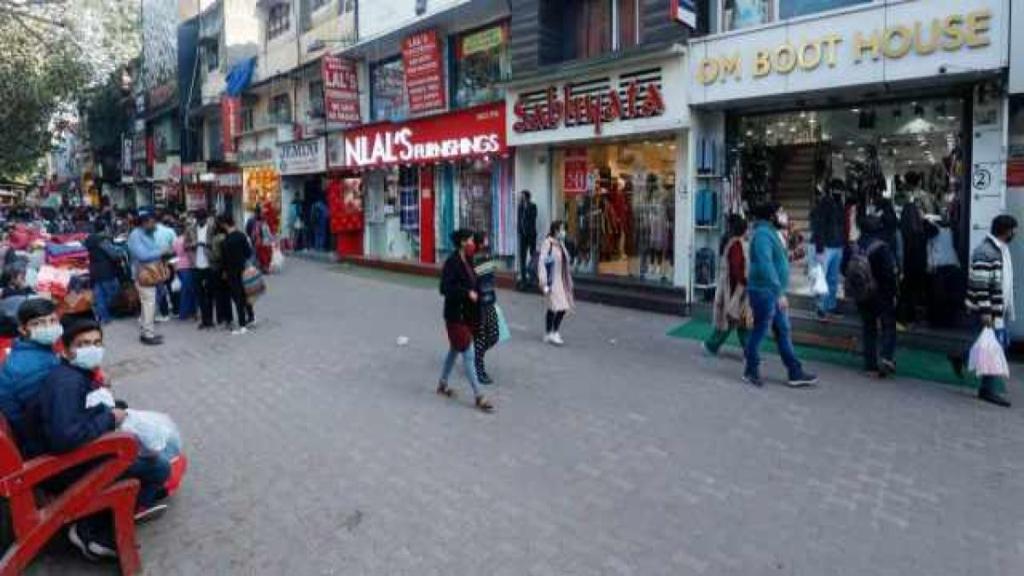When H&M celebrated 20 years of iconic guest designer collaborations over the years with fashion houses such as Karl Lagerfeld, Versace, Stella McCartney, Comme des Garçons, Isabel Marant, Mugler last year, it did with a special preloved collection. H&M Group owns 80% of pre-loved marketplace Sellpy, a big player in second-hand fashion in Europe with access to 24 markets, but the brand has no plans to introduce preloved apparel in India. “While we recognise the potential of the Indian market, we currently have no plans to introduce preloved into our assortment in India. However, we are keeping a close watch on this evolving space,” said a global spokesperson for the brand.
In January this year, New York-based Kirti Poonia, co-founder of resale technology startup Relove, wrapped up India operations with its last clearance sale. In an Instagram post, she said, “… it was difficult to grow and innovate. We tried for three years to truly give it our best shot. So many brands came together to build circularity in fashion, but it remains to be a small market, with very small loyal demand and complex operations.”
Relove is not alone. US-based social shopping platform Poshmark exited India in November 2023, almost two years after it expanded its operations in India.
In June 2024, south Asian ethnic wear resale platform Saritoria, founded by London-based entrepreneur Shehlina Soomro, announced its India exit.
While scaling businesses to survive in the long run and profiting is hard in the preloved market, when it comes to preloved luxury, platforms like Confidential Couture and My Almari are faring better.
“Availability and affordability are key factors in the pre-loved market,” said Anvita Mehra, co-founder of Confidential Couture, which has seen 40% year-on-year jump in sales post-Covid (2021-23), and now reflects a growth of 25%.
“Almost 10 years later, we’ve seen the market and the consumer mindset evolve. Today, there is acceptance to carry preloved items rather than a counterfeit, especially for brands still not available in India, like Celine, Goyard, or in cases of limited stock in the international market. India being a price-sensitive market, the evolution of second-hand has removed the stigmas attached to preloved,” said Mehra, who sells a Louis Vuitton bag for $90,000 otherwise priced at $1,80,000 for a new one. Over 70% of the brand’s inventory is handbags.
India’s second-hand apparel market is projected to grow from $3,003.65 million in 2023 to an estimated $9,111.35 million by 2032, with CAGR of 13.04% from 2024 to 2032, as per Credence Research.
According to Nishita Goenka and Niti Goenka, co-founders of preloved luxury marketplace My Almari, issues such as trust, authentication, and pricing transparency are a concern. The brand started in 2023 with 8-10 orders per month, and today processes over 150 orders a month.
“The products are authenticated, carefully curated, and priced in a way that aligns with market demand. We have partnered with internationally recognised third-party licensed authenticators to guarantee authenticity, reinforcing buyer confidence. The in-person product trials for Mumbai-based buyers and detailed virtual consultations for others has helped us build a strong and loyal customer base,” said Nishita Goenka. The hot-sellers range from Hermès, Chanel and Louis Vuitton.
“Indian buyers are price-conscious but not necessarily looking for the cheapest option—they seek perceived value. A Birkin bag that was purchased for approximately Rs 8 lakh a decade ago, was recently resold for over Rs 18 lakh, highlighting how luxury items can significantly appreciate over time. At the same time, there is a strong demand for brands like Michael Kors, Coach, and Tory Burch, particularly among first-time buyers entering the luxury space. This mix of ultra-luxury and accessible luxury allows us to cater to different buyer segments effectively aged 25-45 years,” added Nishita Goenka, who expects 2025 to have even stronger traction across different price points.
On a global level, the secondhand apparel market will reach $350 billion by 2028, up from $197 billion in 2023, as per the global thrift retailer ThredUp. From an India perspective, the market is growing less than the global average, agrees Prabodh Mishra, associate professor, fashion communication, Pearl Academy. He said: “The receptivity of preloved fashion is more in the age group of 15 to 25 years. But despite a tradition of passing on to generations, it is not reflected in the economics.”
Premium brands are even taking preloved to smaller cities. Tata CLiQ Luxury last year curated a selection of ‘Pre-owned Timeless Icons’ to offer a wide range of vintage, limited-edition products. “The response to this category has been overwhelmingly positive.
A range of luxury timepieces from brands like Rolex, Omega, Breitling, TAG Heuer like the Rolex GMT-Master II, Submariner, and Datejust are in high demand, and so are pre-owned luxury handbags from brands like Bottega Veneta, Gucci, Fendi, and Louis Vuitton. But we witnessed a strong demand from non-metro markets like Ajmer, Bhubaneswar, Cuttack, Guwahati, Patiala, and Raipur that account for up to 45% of the total sales in the timepieces segment, highlighting the expanding reach of luxury pre-owned products beyond major urban centres,” said Gopal Asthana, CEO, Tata CLiQ, who plans to diversify the brand portfolio this year.
For Mehra, the demand for preloved with an average order value between Rs 15,000 and Rs 15 lakh comes from Delhi, Mumbai, Bengaluru, Chennai, Kolkata, Hyderabad, with equal and great demand in tier-2 cities like Indore, Imphal, Chandigarh and Coimbatore.

